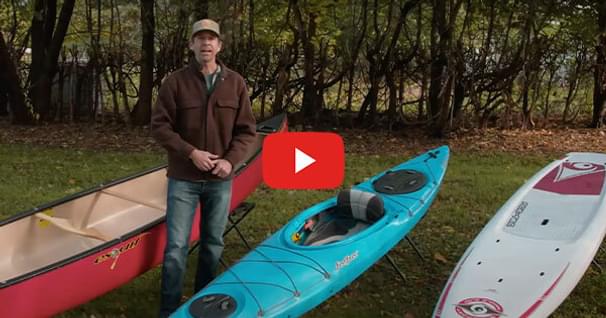The Value of Good Paddling Skills
Earlier this year, a manufacturer of high-end composite canoes sponsored a weekend paddle down a local river in my area. Invited were those who owned one of their canoes-and those who didn't. Around 100 people attended. About 70 percent of the canoes were tandem models; the rest were ultralight solo's. The boats were all gorgeous…and pricey.
Considerable thought went into the choice of the river: it had to be easily accessible from the metro area, and "easy". That meant no rapids, not one! And no sweepers or dead-heads that could catch and capsize a canoe. And no sub-surface rocks that could scratch delicate gel-coat. It would be tragic if a boat was damaged.
The morning began with a light but determined headwind-just enough to produce tiny wavelets on the water, but not enough to impede progress. The current was quick, so the wind wasn't much of problem. Still, there were two capsizes in the first half mile. What caused them to tip? I haven't a clue. There were no obstacles in the water; just the wind, and it wasn't much. In the next 10 miles, three more canoes capsized, for a total of five. Still, no obstacles; just a breeze.
Around noon, we came to a pair of downed trees across the river. Well, not completely across the water-there was an easy canoe length slot around them. The current was running at about four miles an hour so getting safely around the trees required first, an easy backferry towards the left shore, followed by a "drift-down" of around 50 feet, then another easy backferry towards the right shore. When the angle was set, just drift into the canoe length slot and paddle through. Both were easy ferries-they required no power at all, just finesse. In the scheme of difficulty I'd rate them as at best, a 3 out of 10. I was trying a new Kevlar solo canoe which was much too big for me. It was no problem.
Once through the trees, I paddled ashore and waited. The carnage followed. It was bang, bang, bang - three capsizes in a row and soon I was flittering about picking up gear. Then, the word got out: PORTAGE! And soon, there was a string of canoes marching overhead along the right shore. There's nothing wrong with portaging, of course, but canoeing around the downed trees was easy, if you knew what to do.
The problem is that many paddlers don't know what to do. Why? Because they haven't learned, and evidently, don't want to learn, wrongly believing that they'll never have any use for what they perceive as "whitewater tactics". So instead of learning useful ropes, they focus on equipment. Hitting rocks? Well, you need a more durable canoe! Tent blows down in a storm? Best buy a better one! Can't make a cheery fire when the woods are soaked with rain? Get some chemical fire-starters. And the list goes on.
Fact is, skills are much more important than things. Always! Check out some expert paddlers and you'll probably discover that few have the best equipment. Yes, their stuff is solid and well used, but with rare exceptions, it's not top-of-the-line. Why not? Because the "best of the best" is frightfully expensive and only the most accomplished paddlers can appreciate the difference between it and a light leg down. Knowledge and skill, not equipment, are the prime determiners of success. "Stuff" provides an edge, of course-though one that's seldom as great as commonly believed.
Few people who own expensive canoes are wealthy. Most save for years to buy their dream. It's a worthy sacrifice because good canoes "appreciate" whereas bad ones "depreciate". Things can be bought, but skills must be learned. And learning takes time, commitment and an open mind. Regrettably, a lot of people are like the eighth graders I used to teach: if they don't get it instantly, they don't want to make the effort to learn.
There's beauty in watching an accomplished canoeist dance on the water, or run eddy-to-eddy through a challenging rapid-- more so in a gorgeous canoe that glistens in the sun. But there is no joy in watching good people paddle great canoes badly.
Cliff Jacobson is a professional canoe guide and outfitter for the Science Museum of Minnesota, a wilderness canoeing consultant, and the author of more than a dozen top-selling books on camping and canoeing. www.cliffcanoe.com
Related Articles
Ken Whiting answers the big question for new paddlers - Do you go for a canoe, a kayak, or a stand up…
By changing how you edge and balance your boat you can increase your stability and adaptability. Using…
After the raw dimensions of length, width and depth, canoe performance is determined by hull shape.…
In this video, we're going to look at five kayaking tips that will make you a better paddler or at least…



